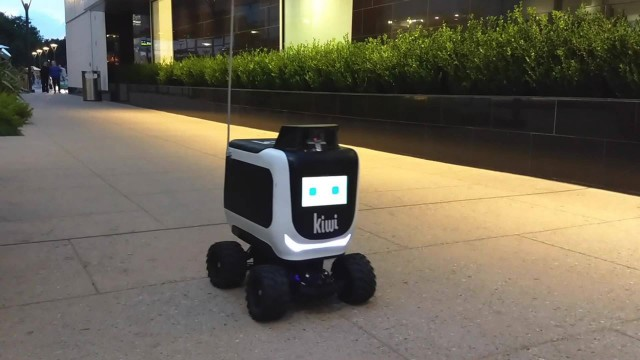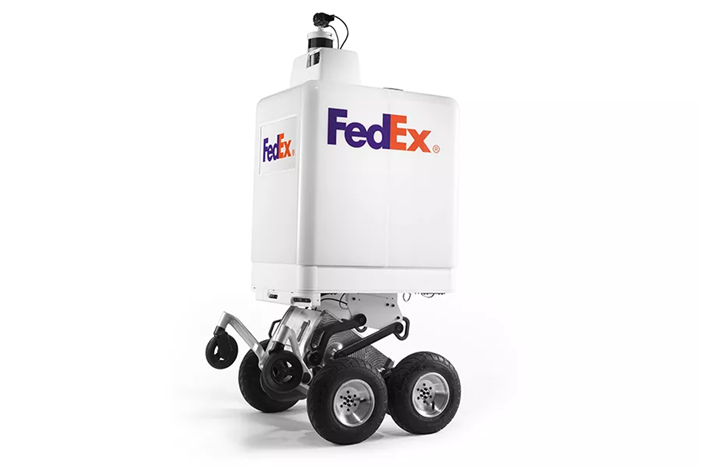- Transport and Logistics Innovation
- Urban Innovation
- Autonomous Vehicles
- smart cities
Delivery Bots Are Taking Over College Campuses, Are Residential Areas Next?

Campus-style markets naturally lend themselves to the deployment of sidewalk delivery bots since they have simpler, more predictable environments compared to complex public roads and dynamic urban corridors. University campuses have proven to be a particularly ideal testing ground for delivery bots due to geographic consistency (ability for pre-defined routes) and high levels of consumer acceptance of robotics technology from tech-savvy students.
The deployment of delivery bots at numerous university campuses is already well underway. California-based startup Kiwi Campus has completed over 70,000 deliveries (e.g., food deliveries, groceries, school supplies) at the University of California, Berkeley since it began operations in 2017. The company has over 150 Kiwibots in operation and is planning to expand its delivery business to several additional US campuses in 2020. The rapidly expanding business expects to eclipse 1 million deliveries within the next few years.
Kiwi Campus Kiwibot

(Source: Kiwi Campus)
Starship Technologies is another leading delivery bot startup focusing on university campuses. The company was launched in 2014 by the cofounders of Skype and is based in San Francisco, California. Starship claims to have tested its delivery bot in over 100 cities globally (mostly at US university campuses) and completed over 100,000 commercial deliveries. According to the National Center for Education Statistics, there are over 7,000 postsecondary institutions in the US alone, indicating substantial market potential for delivery bots in these environments.
Are Residential Deliveries Next?
Major companies such as FedEx, Ford, and Amazon are also developing advanced sidewalk delivery bots—though these programs are more focused on residential deliveries. In February 2019, FedEx released Roxo, the FedEx SameDay Bot, designed to help retailers make deliveries to nearby customers using an automated delivery device. The company is collaborating with partners such as Lowe’s, Pizza Hut, Target, Walgreens, and Walmart to assess how the bot could satisfy delivery needs.
Roxo, The FedEx SameDay Bot

(Source: FedEx)
The electric and automated bot reportedly travels at about 10 mph along sidewalks and some roadsides, using a combination of machine learning, lidar, and multiple cameras to navigate through communities. The SameDay Bot is designed to complement FedEx’s SameDay City service, which operates in 32 markets across 1,900 cities. Testing began at FedEx and partner locations across a number of US markets in summer 2019.
Obstacles Remain for Urban Use Cases
Through the success of innovative startups such as Kiwi Campus and Starship Technologies, delivery bots have already completed hundreds of thousands of deliveries globally. As these startups expand their operations, sidewalk bot deliveries are likely to grow into the millions over the next 3-5 years. However, Guidehouse Insights, does anticipate significant obstacles for delivery bots to scale from campus environments to cities. Without any dedicated infrastructure for operation, it’s difficult to see how busy urban sidewalks or bike lanes can accommodate delivery bots without a plethora of accessibility and safety complications. It’s also unclear whether city dwellers can accept sharing sidewalks or bike lanes with robots. Even on college campuses, delivery bots have faced challenges related to vandalism, theft, and resident opposition. They also have challenges related to impeding wheelchair users.
Refraction AI is pushing the transition from campuses to cities. Using roads and bike lanes, the company’s REV-1 robots are expected to operate at the University of Michigan’s main campus, which is not physically separated from Ann Arbor’s downtown core. This pilot should serve as an important test bed to see how delivery bots perform in denser urban settings.